Grow Mustard Greens right in your backyard! Imagine stepping outside and harvesting fresh, peppery greens for your salad or stir-fry, all thanks to your own green thumb. For centuries, mustard greens have been a staple in cuisines around the world, from Asian stir-fries to Southern comfort food. Their vibrant flavor and nutritional benefits have made them a beloved ingredient, and now, you can easily cultivate them yourself.
But let’s be honest, sometimes gardening feels overwhelming, right? That’s where these simple DIY tricks and hacks come in. I’m going to share some easy-to-follow tips that will help you successfully grow mustard greens, even if you’re a complete beginner. Forget complicated gardening jargon and expensive equipment. We’re focusing on practical, budget-friendly solutions that will transform your garden into a thriving source of fresh, delicious greens.
Why bother with store-bought mustard greens when you can have a constant supply of organic, flavorful leaves right at your fingertips? Plus, gardening is a fantastic way to relieve stress, connect with nature, and enjoy the satisfaction of growing your own food. So, grab your gardening gloves, and let’s get started!
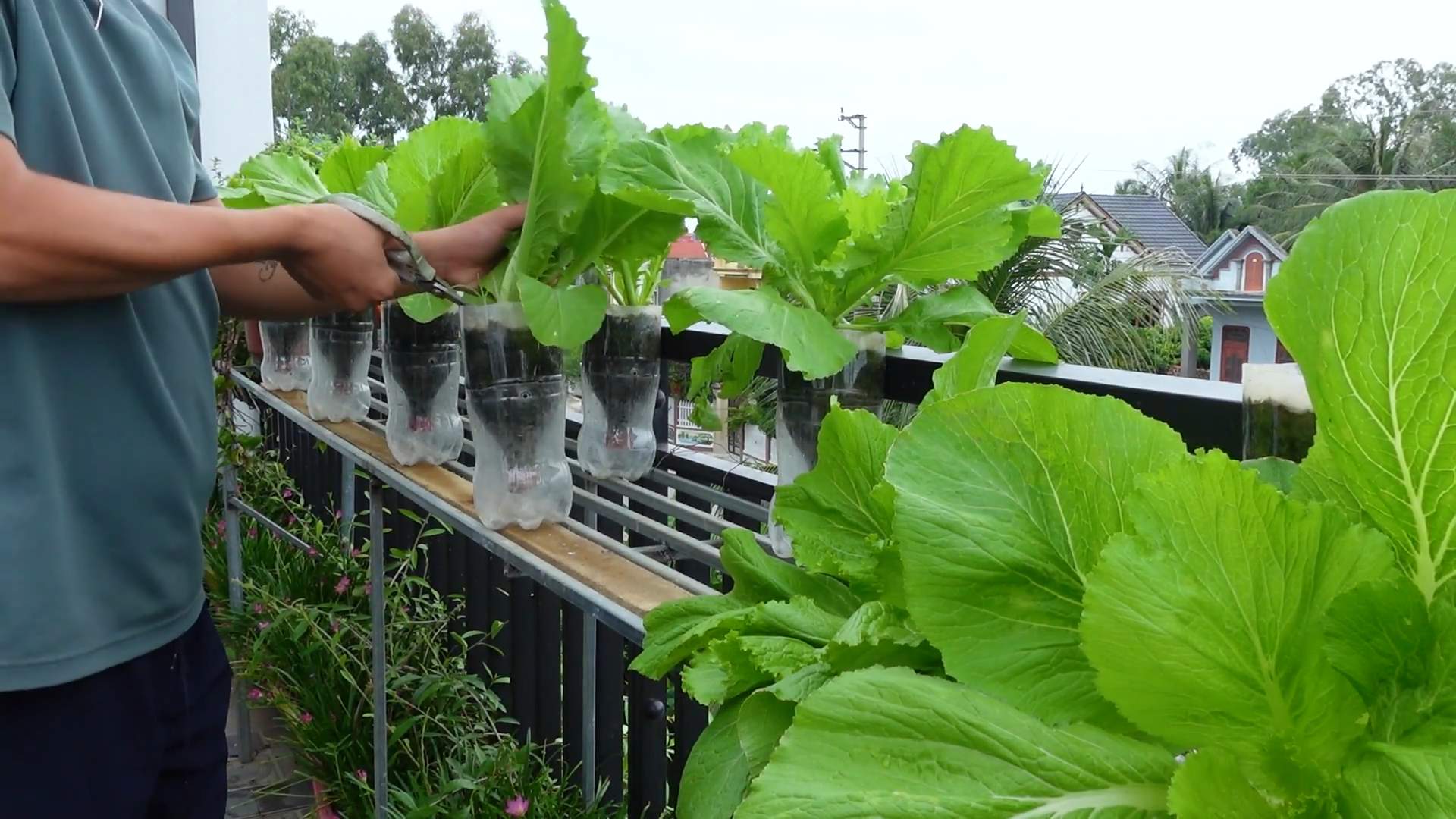
Growing Mustard Greens: A Beginner’s Guide to a Spicy Harvest
Mustard greens! I absolutely love them. They add such a peppery kick to salads, stir-fries, and even smoothies (if you’re brave!). And the best part? They’re incredibly easy to grow yourself, even if you don’t have a huge garden. This guide will walk you through everything you need to know to cultivate your own delicious mustard greens.
What You’ll Need
Before we dive in, let’s gather our supplies. This is a pretty low-maintenance project, so the list is short and sweet:
* Mustard Green Seeds: Choose your variety! There are tons of options, from the mild ‘Florida Broadleaf’ to the intensely spicy ‘Red Giant’. I personally love ‘Southern Giant Curled’ for its frilly leaves and robust flavor.
* Potting Soil (or Garden Soil): If you’re growing in containers, a good quality potting mix is essential. If you’re planting directly in the ground, make sure your garden soil is well-draining and amended with compost.
* Containers (Optional): If you’re short on space, containers are your best friend. Choose pots that are at least 6 inches deep to give the roots plenty of room to grow.
* Watering Can or Hose: For keeping your greens happy and hydrated.
* Fertilizer (Optional): A balanced fertilizer can give your mustard greens a boost, but it’s not strictly necessary.
* Gardening Gloves (Optional): To keep your hands clean.
* Trowel or Small Shovel: For planting seeds.
* Row Covers (Optional): To protect your plants from pests and frost.
Getting Started: Planting Your Mustard Greens
Okay, let’s get our hands dirty! Here’s how to plant your mustard green seeds:
1. Choose Your Location: Mustard greens thrive in full sun to partial shade. Aim for at least 4-6 hours of sunlight per day. If you live in a hot climate, afternoon shade is beneficial to prevent the leaves from scorching.
2. Prepare the Soil: Whether you’re using containers or planting directly in the ground, make sure the soil is loose and well-draining. If you’re using garden soil, amend it with compost or other organic matter to improve its fertility and drainage.
3. Sow the Seeds: Mustard green seeds are tiny, so you don’t need to plant them very deep. Sow the seeds about ¼ inch deep and ½ inch apart. You can either broadcast the seeds over the soil surface and then gently rake them in, or plant them in rows.
4. Water Gently: After planting, water the soil gently to moisten it. Be careful not to overwater, as this can cause the seeds to rot.
5. Thin Seedlings (If Necessary): Once the seedlings emerge (usually within 5-7 days), thin them out so that they are about 2-3 inches apart. This will give them enough room to grow and prevent overcrowding. Don’t throw away the thinned seedlings! You can eat them as microgreens.
Caring for Your Mustard Greens
Now that your mustard greens are planted, it’s time to give them some TLC. Here’s what you need to do to keep them happy and healthy:
1. Water Regularly: Mustard greens need consistent moisture to thrive. Water them regularly, especially during hot, dry weather. Aim to keep the soil consistently moist, but not waterlogged. I usually check the soil moisture by sticking my finger about an inch deep. If it feels dry, it’s time to water.
2. Fertilize (Optional): If you want to give your mustard greens a boost, you can fertilize them every 2-3 weeks with a balanced fertilizer. Follow the instructions on the fertilizer package. I personally prefer using a liquid seaweed fertilizer, as it’s gentle and provides essential nutrients.
3. Weed Regularly: Keep the area around your mustard greens free of weeds. Weeds can compete with your plants for nutrients and water.
4. Protect from Pests: Mustard greens can be susceptible to pests such as aphids, flea beetles, and cabbage worms. Inspect your plants regularly for signs of pests. If you find any, you can try spraying them with insecticidal soap or neem oil. Row covers can also help to protect your plants from pests.
5. Bolting Prevention: Bolting is when the plant prematurely flowers and goes to seed. This usually happens when the weather gets too hot. Bolting can make the leaves taste bitter. To prevent bolting, try to plant your mustard greens in early spring or late summer, when the weather is cooler. You can also provide them with afternoon shade during hot weather.
Harvesting Your Mustard Greens
The best part! Harvesting your own homegrown mustard greens is so rewarding.
1. When to Harvest: You can start harvesting your mustard greens when the leaves are about 4-6 inches long. This is usually about 4-6 weeks after planting.
2. How to Harvest: You can harvest the entire plant at once, or you can harvest individual leaves as needed. To harvest individual leaves, simply snip them off with scissors or a knife. Start with the outer leaves, as these are the oldest and will be the first to become bitter.
3. Succession Planting: To ensure a continuous supply of mustard greens, sow new seeds every 2-3 weeks. This is called succession planting.
Troubleshooting
Even with the best care, you might encounter a few problems along the way. Here are some common issues and how to fix them:
* Yellowing Leaves: This could be a sign of overwatering, underwatering, or nutrient deficiency. Check the soil moisture and adjust your watering accordingly. If the soil is dry, water more frequently. If the soil is waterlogged, allow it to dry out before watering again. You can also try fertilizing your plants with a balanced fertilizer.
* Holes in Leaves: This is usually caused by pests such as flea beetles or cabbage worms. Inspect your plants regularly for signs of pests. If you find any, you can try spraying them with insecticidal soap or neem oil. Row covers can also help to protect your plants from pests.
* Bitter Taste: This is usually caused by bolting. To prevent bolting, try to plant your mustard greens in early spring or late summer, when the weather is cooler. You can also provide them with afternoon shade during hot weather.
Mustard Green Varieties to Explore
There are so many different varieties of mustard greens to choose from! Here are a few of my favorites:
* Florida Broadleaf: A mild and tender variety that’s great for salads.
* Southern Giant Curled: A frilly variety with a robust flavor.
* Red Giant: A spicy variety with beautiful red leaves.
* Osaka Purple: A mild variety with purple-tinged leaves.
* Mizuna: A Japanese mustard green with a mild, peppery flavor.
Using Your Harvest
Now that you’ve harvested your mustard greens, it’s time to enjoy them! Here are a few ideas:
* Salads: Add mustard greens to your salads for a peppery kick.
* Stir-fries: Sauté mustard greens with garlic and ginger for a delicious side dish.
* Soups: Add mustard greens to your soups for extra flavor and nutrients.
* Smoothies: Blend mustard greens into your smoothies for a healthy boost.
* Pickling: Pickle your mustard greens for a tangy and flavorful condiment.
Extra Tips for Success
* Soil Testing: Before planting, consider getting your soil tested to determine its pH and nutrient levels. This will help you to amend the soil properly and ensure that your mustard greens have everything they need to thrive.
* Companion Planting: Mustard greens grow well with other vegetables such as carrots, beets, and onions. Companion planting can help to deter pests and improve the overall health of your garden.
* Crop Rotation: To prevent soilborne diseases, rotate your crops each year. Don’t plant mustard greens in the same spot year after year.
* Enjoy the Process: Gardening should be fun! Don’t be afraid to experiment and try new things. The more you learn, the better you’ll become at growing your own food.
Growing mustard greens is a simple and rewarding way to add fresh, flavorful greens to your diet. With a little bit of care and attention, you can enjoy a bountiful harvest of these spicy greens all season long. Happy gardening!
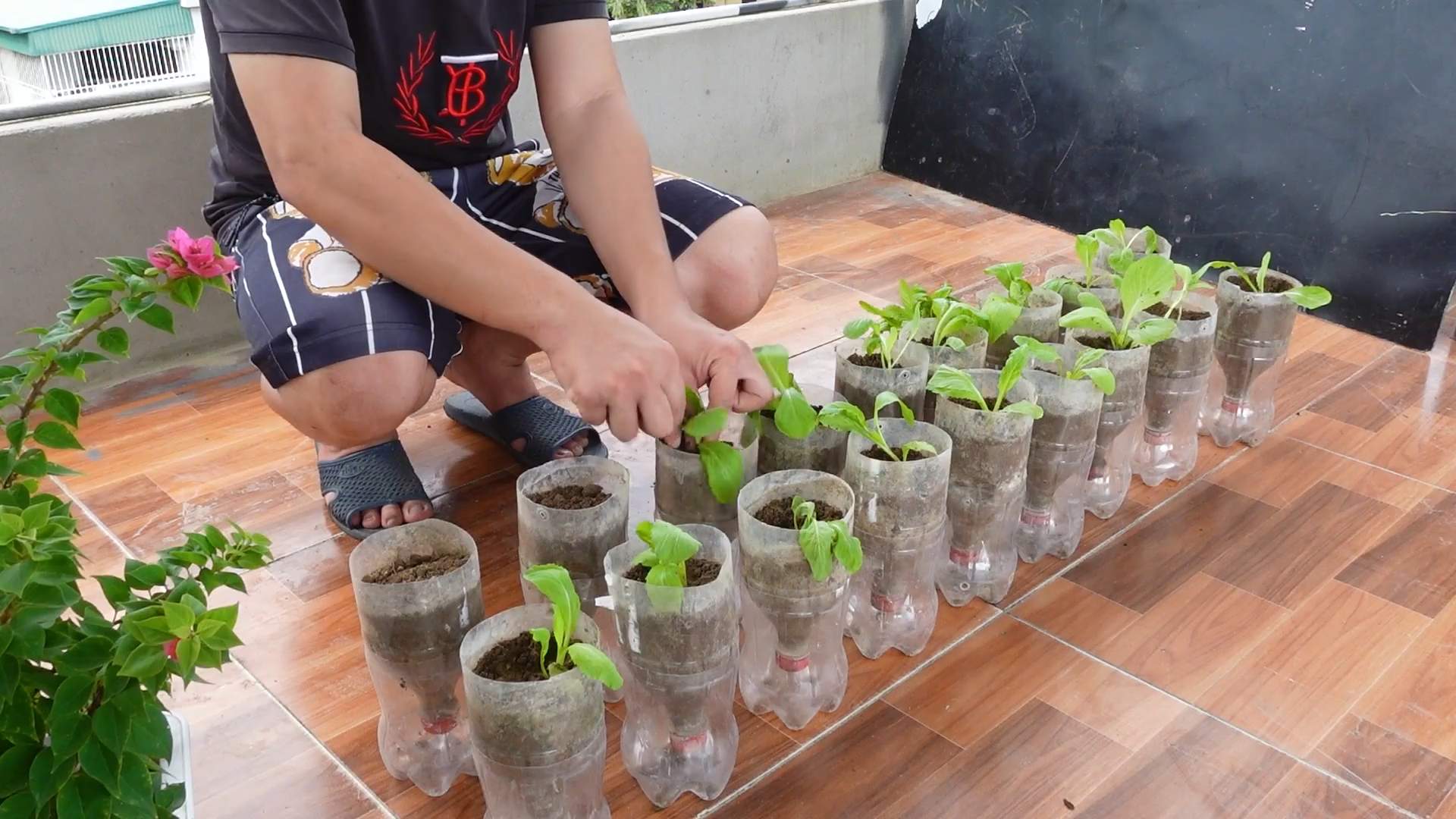
Conclusion
So, there you have it! Growing your own mustard greens is not only incredibly simple, but it’s also a rewarding experience that puts fresh, flavorful greens right at your fingertips. Forget those wilted, overpriced bunches at the grocery store. With minimal effort and a little bit of patience, you can cultivate a vibrant patch of these peppery delights, ready to add a zesty kick to your meals.
Why is this DIY trick a must-try? Because it empowers you to control the quality and freshness of your food. You know exactly what goes into your mustard greens – no pesticides, no hidden chemicals, just pure, unadulterated goodness. Plus, it’s a fantastic way to connect with nature, even if you only have a small balcony or windowsill. The satisfaction of harvesting something you’ve nurtured from seed is truly unparalleled.
But the fun doesn’t stop there! Feel free to experiment with different varieties of mustard greens. Some are milder, some are spicier, and some have beautiful frilly leaves. Try growing ‘Red Giant’ for its striking color and robust flavor, or ‘Florida Broadleaf’ for a more traditional taste. You can also play around with the growing conditions. Mustard greens thrive in cooler weather, but with a little shade, you can extend their growing season. Consider succession planting – sowing new seeds every few weeks – to ensure a continuous harvest throughout the spring and fall.
Another variation to consider is growing mustard greens as microgreens. Harvest them just a few weeks after planting for a concentrated burst of flavor and nutrients. They’re perfect for adding to salads, sandwiches, or smoothies. You can even grow them indoors year-round with a simple grow light.
And don’t forget the power of companion planting! Mustard greens are known to repel certain pests, making them a valuable addition to your vegetable garden. Plant them near your tomatoes, peppers, or eggplants to help protect them from unwanted visitors.
Ultimately, growing your own mustard greens is about more than just saving money or having access to fresh produce. It’s about embracing a more sustainable and self-sufficient lifestyle. It’s about connecting with the earth and appreciating the simple pleasures of growing your own food.
We wholeheartedly encourage you to give this DIY trick a try. It’s easier than you think, and the rewards are well worth the effort. Once you’ve tasted the difference between homegrown mustard greens and store-bought ones, you’ll never go back.
So, grab some seeds, find a sunny spot, and get ready to experience the joy of growing your own delicious and nutritious mustard greens. And most importantly, don’t forget to share your experience with us! We’d love to hear about your successes, your challenges, and your favorite ways to use your homegrown harvest. Share your photos and tips on social media using #HomegrownMustardGreens. Let’s inspire others to join the movement and discover the magic of growing their own food!
Frequently Asked Questions (FAQs)
What are the best conditions for growing mustard greens?
Mustard greens thrive in cool weather, ideally between 60°F and 75°F (15°C and 24°C). They prefer full sun, but can tolerate partial shade, especially in warmer climates. The soil should be well-draining and rich in organic matter. Amend your soil with compost or aged manure before planting to provide essential nutrients. Consistent moisture is crucial, so water regularly, especially during dry spells. Avoid overwatering, as this can lead to root rot.
How long does it take for mustard greens to grow?
Mustard greens are relatively fast-growing. You can typically harvest baby greens in about 3-4 weeks, and mature leaves in 6-8 weeks. The exact time will depend on the variety, growing conditions, and your desired leaf size. Check the seed packet for specific information.
Can I grow mustard greens in containers?
Absolutely! Mustard greens are well-suited for container gardening. Choose a pot that is at least 6 inches deep and has drainage holes. Use a high-quality potting mix and water regularly. Container-grown mustard greens may need more frequent watering than those grown in the ground, as the soil in containers tends to dry out faster. Place the container in a sunny location.
What are some common pests and diseases that affect mustard greens?
Common pests that can affect mustard greens include aphids, flea beetles, and cabbage worms. You can control aphids with a strong spray of water or insecticidal soap. Flea beetles can be deterred by using row covers or diatomaceous earth. Cabbage worms can be handpicked or controlled with Bacillus thuringiensis (Bt). Diseases that can affect mustard greens include downy mildew and white rust. Ensure good air circulation and avoid overwatering to prevent these diseases. If you notice signs of disease, remove affected leaves promptly.
How do I harvest mustard greens?
You can harvest mustard greens at any stage of growth, depending on your preference. For baby greens, simply snip off the leaves with scissors when they are a few inches tall. For mature leaves, harvest the outer leaves first, leaving the inner leaves to continue growing. This will allow you to enjoy a continuous harvest over several weeks. Wash the harvested leaves thoroughly before using them.
Can I eat the stems of mustard greens?
Yes, the stems of mustard greens are edible, but they can be a bit tough. If you’re using mature leaves, you may want to remove the stems before cooking. However, the stems of young mustard greens are tender and can be eaten raw or cooked.
How do I store mustard greens?
To store mustard greens, wash them thoroughly and pat them dry. Wrap them in a paper towel and place them in a plastic bag in the refrigerator. They should last for about 3-5 days.
Are mustard greens nutritious?
Yes, mustard greens are packed with nutrients! They are an excellent source of vitamins A, C, and K, as well as folate, calcium, and fiber. They also contain antioxidants that can help protect against chronic diseases.
Can I grow mustard greens indoors?
Yes, you can grow mustard greens indoors, especially as microgreens. Use a shallow tray or container filled with potting mix. Sow the seeds densely and keep the soil moist. Place the tray in a sunny location or under a grow light. Harvest the microgreens when they are a few inches tall.
What are some ways to use mustard greens in cooking?
Mustard greens can be used in a variety of dishes. They can be eaten raw in salads, added to stir-fries, sautéed with garlic and olive oil, or used in soups and stews. They pair well with bacon, ham, vinegar, and spices like garlic, ginger, and chili flakes. Experiment with different recipes to find your favorite way to enjoy these flavorful greens.
Can I save seeds from my mustard greens?
Yes, you can save seeds from your mustard greens, but it requires allowing the plants to bolt (flower and produce seeds). Let a few plants mature fully and allow them to flower. Once the seed pods are dry and brown, harvest them and extract the seeds. Store the seeds in a cool, dry place for future planting. Be aware that if you are growing multiple varieties of mustard greens, they may cross-pollinate, resulting in seeds that produce plants with mixed characteristics.
What is the best time of year to plant mustard greens?
Mustard greens are a cool-season crop, so the best time to plant them is in early spring or late summer/early fall. Avoid planting them during the hottest months of the year, as they may bolt (go to seed) prematurely.
Are there any companion plants that benefit mustard greens?
Yes, several plants can benefit mustard greens when planted nearby. These include:
* **Radishes:** They deter flea beetles, a common pest of mustard greens.
* **Garlic and Onions:** They repel aphids and other pests.
* **Marigolds:** They attract beneficial insects and repel nematodes.
* **Dill:** It attracts beneficial insects that prey on pests.
Avoid planting mustard greens near fennel, as it can inhibit their growth.

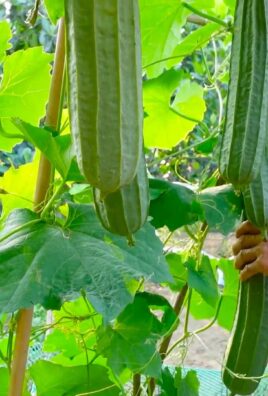
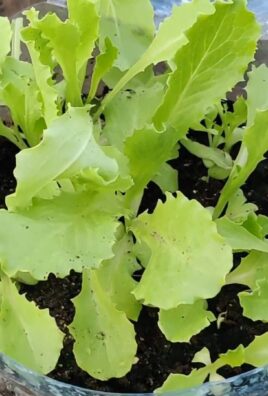
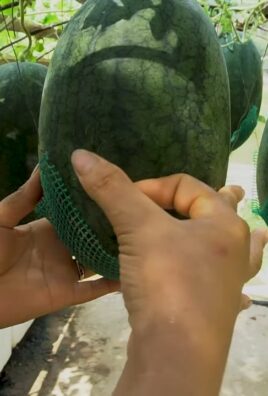
Leave a Comment